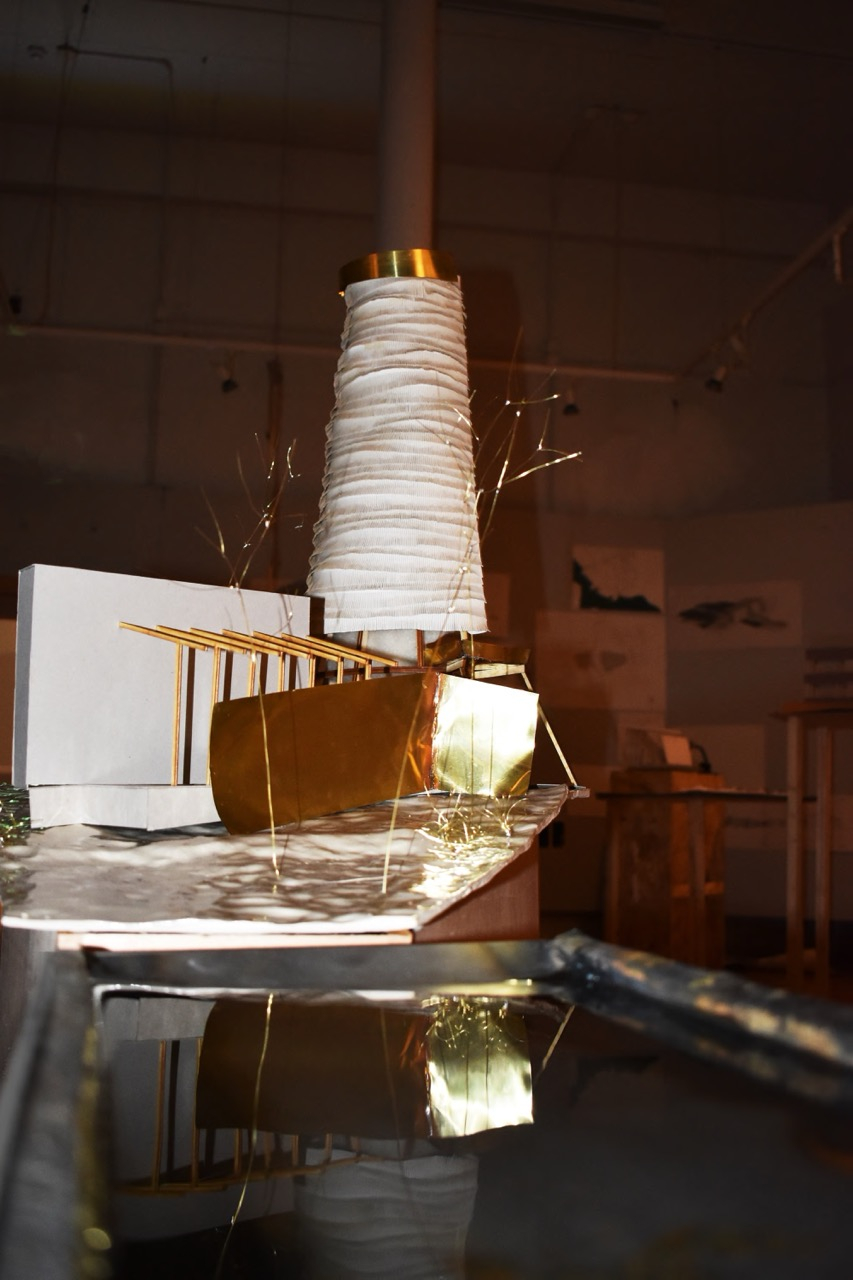
Moving Water: North Sea Edge
Studio leader: Andrea Faed. Tutor: Jack Green
This studio was framed around an enquiry into the uses of landscape water devices to encourage biodiverse habitats and environmental sustainability. Exploring the physicality of bodies of water, the studio then used this knowledge to speculate on an Architecture of Entangled Ecosystems.
Bodies of water within Edinburgh, from freshwater reservoirs to salty water harbours, were observed and drawn. The studio then shifted its explorations to the watery landscape of the lowland coast of the North Sea, the Wadden Sea. The Wadden Sea, the largest unbroken system of intertidal sand and mud flats in the world, is a shallow body of water, rich in biological diversity. Historically, these coastal regions were subjected to large floods, but ditches and causeways have been built to reduce destruction, making it among the most human-altered habitats on the planet. It is now a UNESCO World Heritage Site.
Following a train journey across the islands of Denmark, from Copenhagen to Esbjerg, the studio focused on Esbjerg as a testing ground to explore the intertwining of human societies and natural ecosystems, proposing an architecture to respond to water. A hybrid set of buildings between land and water were developed, harvesting produce from the land to make cities greener through self-sustaining energy, water and food systems.





![Section through Distillery [originally at 1:50]](/sites/default/files/styles/header_image/public/2025-05/1-50_Distillery_Section_2-01.jpg?itok=zqSlDVVV)
![Wind - Salt - Water [Axonometric]](/sites/default/files/styles/header_image/public/2025-06/Wind%20-%20Salt%20-%20Water%20%5BAxonometric%5D.jpg?itok=aNwk6W4z)
